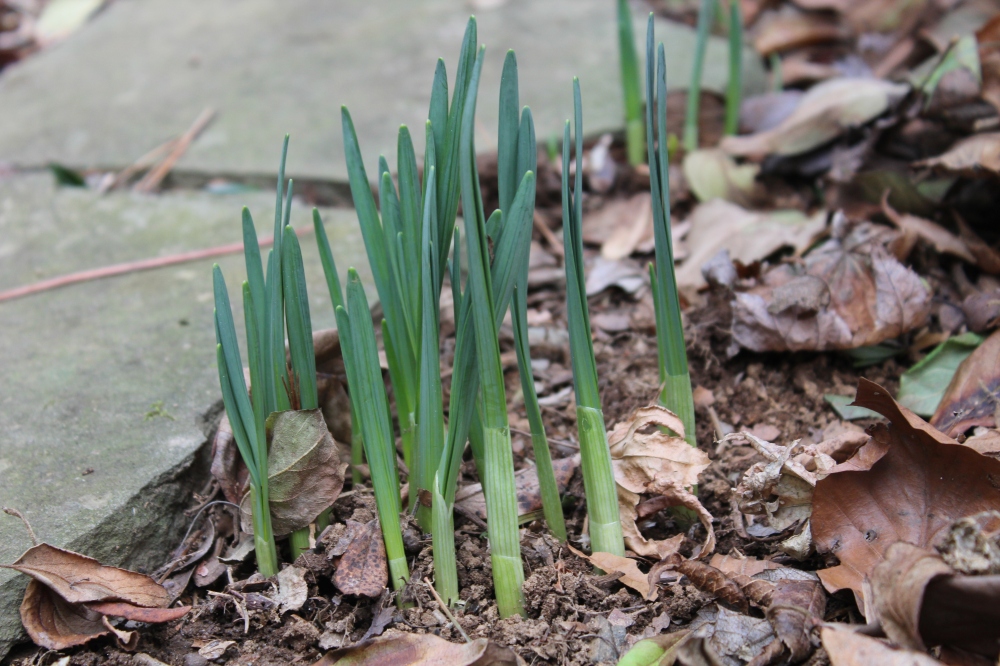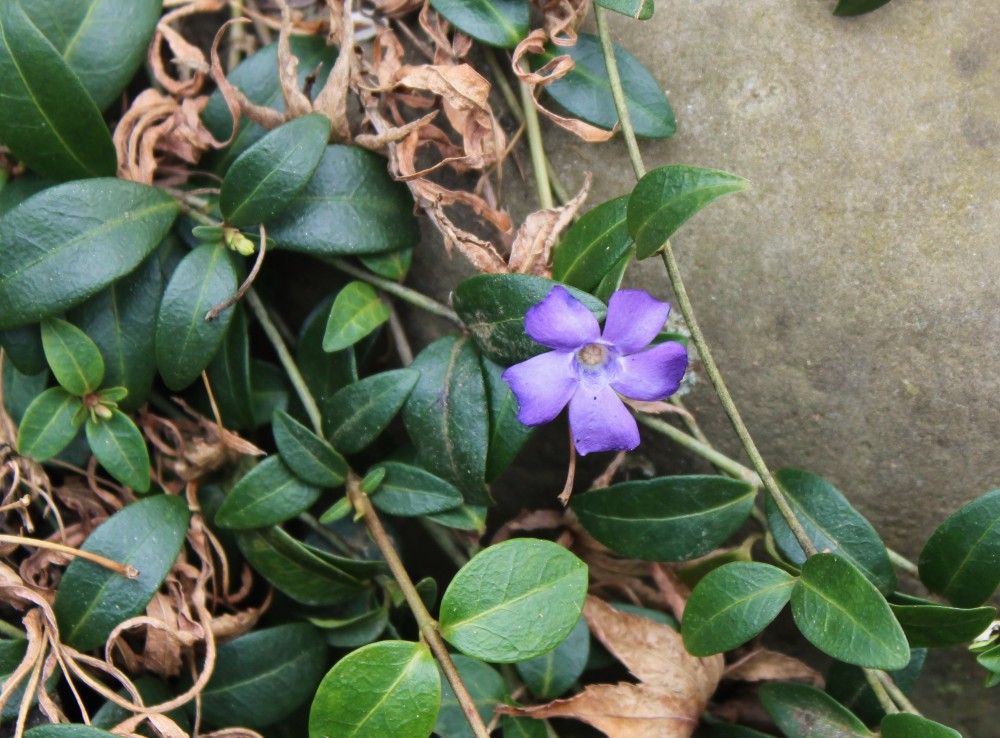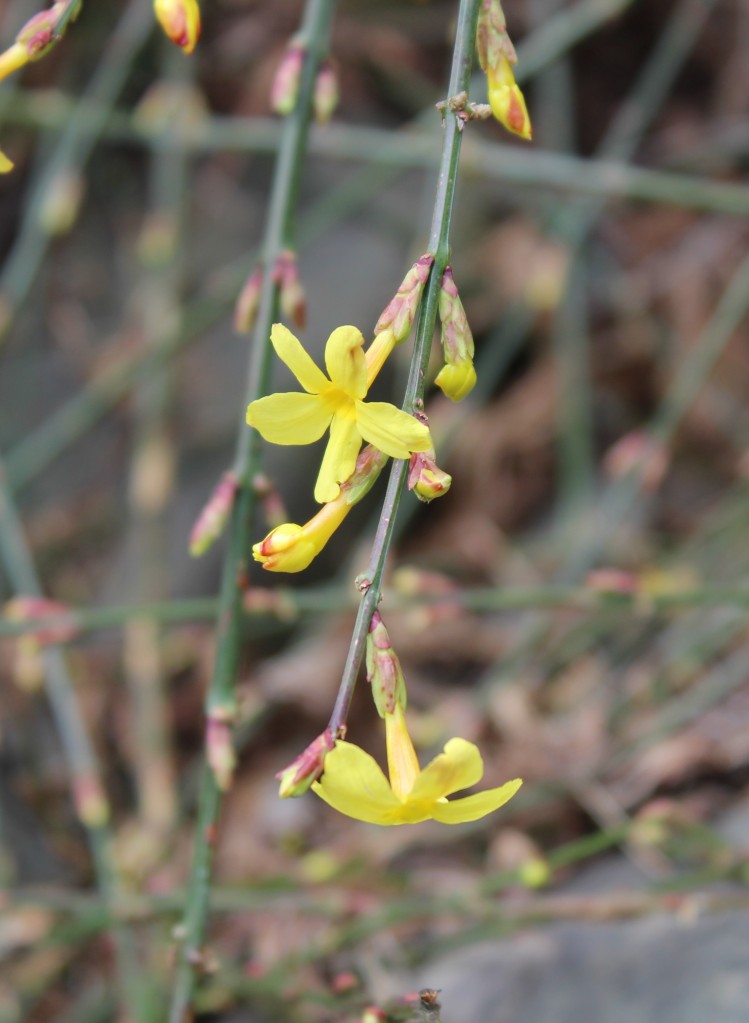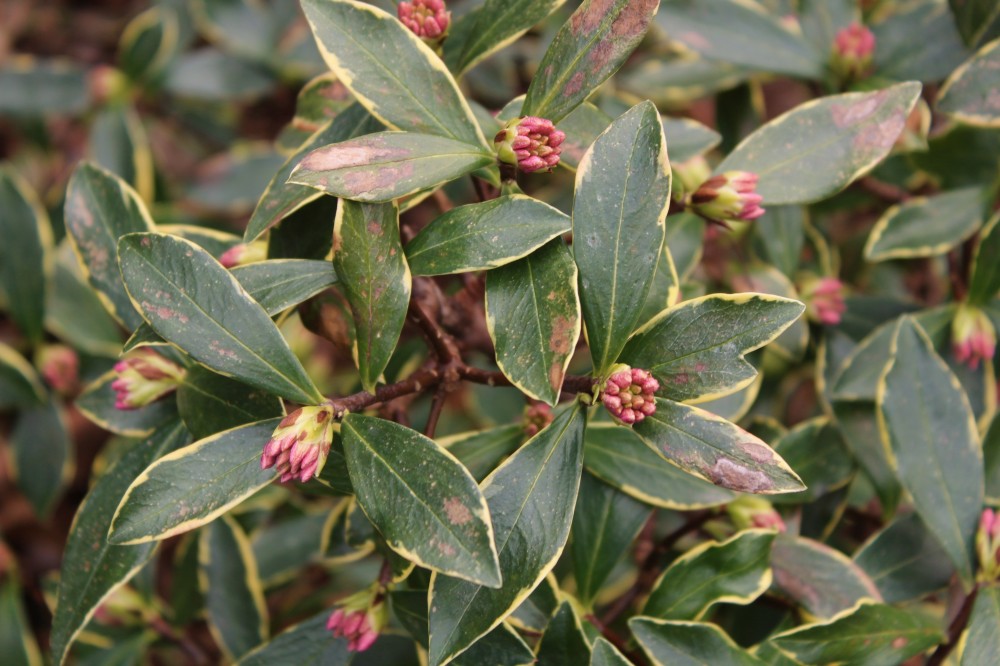While leisurely strolling through the garden on a warm early February afternoon, I noted the appearance of allium and narcissus foliage, which is unsurprising with the mild temperatures of the past few weeks, and not anything to be concerned about. While foliage now peeks several inches through leaf clutter, a year ago growth was considerably more advanced (with color showing) by the last week of January, when it was then buried under a few feet of snow. With that far from ideal circumstance, little damage was done, though a few narcissus flowered meekly several weeks after the snow melted. Growth from the same sturdy bulbs is now poking up beside a stone path in the side garden (below), so as expected, there was no long term ill effect.
This recent mild spell has spurred a few scattered blooms on periwinkles (below) and an early flowering spirea, which is hardly unusual and also no cause for concern as long as growth doesn’t proceed much further. A year ago, it did, and the deep snow was somewhat of a blessing, insulating from the short period of cold that followed.
Flowers of hellebores (above), witch hazels, mahonias, Winter jasmine (below), and snowdrops are just about where the gardener expects they should be at the start of February. Some are flowering, with others just beginning, and I sympathize with the gardener who must wait out the last half of winter without the encouragement of at least a few scattered blooms. A few paperwhites, orchids, and forced branches of pussywillow brought into the kitchen are helpful, but they’re not nearly as satisfying as flowers in the garden. I’m not keen on strolling on a breezy, twenty-five degree afternoon, but happily, there have been few of those, and in recent weeks I’ve spent more time outdoors than usual, though little in labor preparing the garden for spring. That time will be here soon enough.
Gardeners are very aware that long term weather forecasts are less than dependable, perhaps more reliable than ones made by large rodents, but a few degrees can be the difference between rain, and ice or snow, so daily and long term forecasts are watched closely, if only to reassure that no severe weather is in the works. Forecasts of mild weather seem too good to be true until they’re here, and here’s another one. If temperatures don’t turn too cold, this could be one of the rare late winters when Winter daphnes (below) and paperbushes are flowering before the end of February, which is as good as it gets in the winter garden.

Is this a bee friendly shrub?
It’s difficult to tell if a shrub attracts bees when it flowers in winter. Yesterday, which was abnormally warm, there were bees on mahonias that remain in flower, but otherwise I haven’t seen bees in weeks.